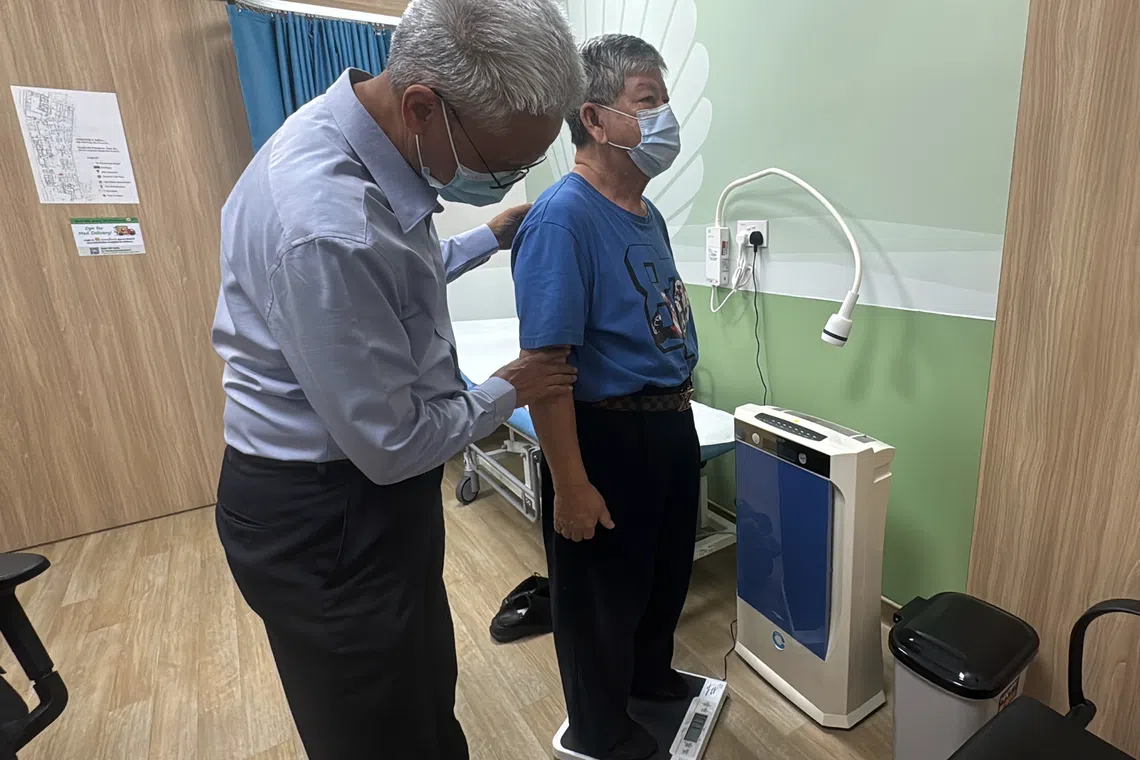SINGAPORE – A local study of senior men with chronic conditions showed that those with osteoporosis often went undiagnosed until they suffered bone fractures.
Among those who did get diagnosed, some went without medication for up to a year – a missed opportunity to reverse the situation and rebuild bone health before possibly debilitating fractures happen.
“Our findings show that older men with chronic diseases face a double jeopardy – their underlying conditions increase fracture risk, and bone health evaluation is routinely neglected during their medical care,” said Clinical Associate Professor Tan Ngiap Chuan, director of research and the Primary Care Research Institute under SingHealth Polyclinics (SHP).
Prof Tan is the main author of the study, published in the Archives of Osteoporosis in September 2024.
Osteoporosis – a disease characterised by an increased fracture risk due to the deterioration of bone tissue – is traditionally associated with women, who face higher risks due to hormonal changes during menopause.
The SHP study analysed the records of 17,644 men aged 65 and above, who have diabetes, hypertension and/or hyperlipidaemia, and were treated for these chronic conditions at SingHealth polyclinics between 2017 and 2018.
Of these patients, 403 or 2.3 per cent suffered from osteoporosis, but 22 of them were not formally recorded as diagnosed with the disease even after they suffered a fracture or their bone mass density results showed osteoporosis.
In addition, only one in four of those diagnosed received some form of treatment for the disease.
Even among those newly diagnosed after suffering a bone fracture, the study found that none of them received osteoporosis medication within a year of their diagnosis.
Prof Tan said that while the cause of osteoporosis is not fully understood, it is known that the disease can be slowed and possibly reversed through medication as well as lifestyle changes such as quitting smoking, limiting alcohol intake, consuming adequate calcium and vitamin D, engaging in regular weight-bearing exercises such as walking, and effective management of chronic health conditions.
Studies have shown that women aged 50 years or older have a higher rate of osteoporosis, around four times that for men. In addition, a 2001 study in the UK estimated that one out of three women, and one out of five men, would experience fragility fractures at least once in their lifetime.
In ageing societies like Singapore, the number of such fractures among the population is expected to increase over time, especially hip fractures, which would result in about eight days of hospitalisation, based on a 2024 National University of Singapore study.
Due to the established higher risk faced by women, bone health screening and clinical practices related to osteoporosis have primarily focused on women. There is also an established self-help tool – the Osteoporosis Self-Assessment Tool for Asians (Osta), which allows post-menopausal women to easily gauge their risk based on age and weight.
However, similar resources and clinical knowledge are lacking for older men, who may also face higher risks with their chronic conditions, a situation particularly worrying to Prof Tan.
This is especially considering that men who suffer osteoporotic fractures tend to fare worse than women, with higher rates of disability, and also a slightly more-than-doubled rate of deaths, at 37.5 per cent, one year after the fracture, he said.
Prof Tan hoped that more systematic screening can be instituted for older men.
To this end, SHP is working on a self-assessment tool similar to the Osta, to aid men in self-testing their risk level and to better understand when they should seek medical help for osteoporosis risk.
Based on the Ministry of Health’s Agency for Care Effectiveness (ACE) clinical guidelines on osteoporosis, updated in August, risk factors for osteoporosis or fragility fractures include early menopause at the age of 45 and younger; family history of osteoporosis or fragility fractures; prolonged immobility; losing more than 2cm of height within three years; excessive alcohol intake; smoking; as well as a low body mass index (BMI).
Prof Tan agreed that these are useful indicators to assess osteoporosis risk, but more so for clinicians rather than laypersons.
To help laypersons with osteoporosis to seek care earlier, SHP is currently testing an artificial intelligence (AI) tool at its polyclinics, aimed at raising awareness of osteoporosis among older women, through a virtual health assistant that can reply to questions and provide information on bone health when asked. SHP intends to adapt the tool for older men too, once the testing is completed.
“The vision is to ensure men also have fairly accurate tools to pre-screen themselves for their risk profile, and get the appropriate advice on what to do next… Our key message is do not wait until things have happened; rather, there are actions that you can take for your own benefit,” said Prof Tan.

